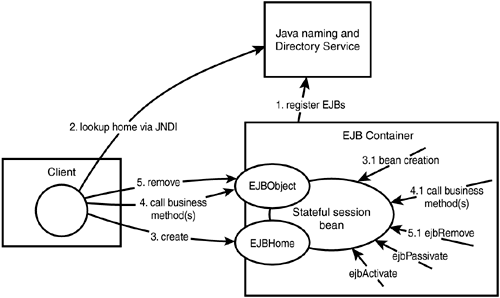Looking Under the Hood of the Stateful Session Bean
Figure 6.1 shows the interactions between the client, the EJB container, and the stateful session bean.
Figure 6.1. Under the hood of a stateful session bean.

The following steps describe the sequence of interactions in detail:
Note
A client never directly accesses instances of the session bean's class.
During the life cycle of the stateful session bean, the container can passivate and activate the session bean instance. This usually occurs when the number of instances reaches a certain limit specified by the developer in the deployment descriptor. During this process, the container calls the session bean's ejbPassivate and ejbActivate methods.
..................Content has been hidden....................
You can't read the all page of ebook, please click here login for view all page.
